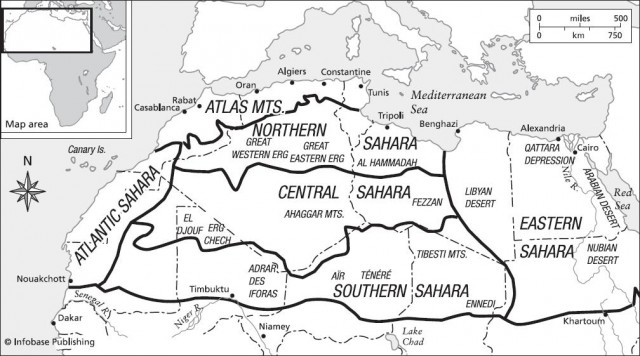Sahara Desert: Northern Africa
Something happened. Something bad. Something strange. Some 6,000 years ago, the region of North Africa that today constitutes the world's greatest desert was a lush grassland studded with scrubby trees, lakes, and streams. Antelope, rhinos, hippos, lions, jackals, giraffes, clams, fish, and human beings wandered about in well-hydrated content. That hospitable grassland habitat dated back at least 400,000 years, according to various studies.
The implications are enormous. Today the Sahara Desert covers almost all of Northern Africa—about 3.3 million square miles (8.6 million sq km). Some areas of this 3,000-mile-wide (4,800 km) swath of rocky desolation and stunning sand dunes form a terrible barrier that cuts off most of the creatures living in Africa from Europe. Between 400,000 and 100,000 years ago, when the first humans were spreading out of southern Africa to populate the planet, they could easily pass through the welcoming grasslands of the Sahara, hunting the same big game animals they evolved alongside in southern Africa.

This grassland affected the course of human history by providing an ecological highway that enabled human beings to spread out of Africa to every other continent. And today, ongoing changes on the margins of the planet's harshest desert have provided clues to current changes in the Earth's climate. Moreover, the abrupt transformation of this grassland into desert between 4,000 and 6,000 years ago may have helped spur the development of western civilization.
Researchers have found the answers to vital questions as they have studied the massive sand dunes, dried lake beds, and scattered stone tools in a desert that is 1,200 miles (1,900 km) deep and 3,000 miles (4,800 km) wide with bizarre wildlife, singing dunes, and ancient secrets.